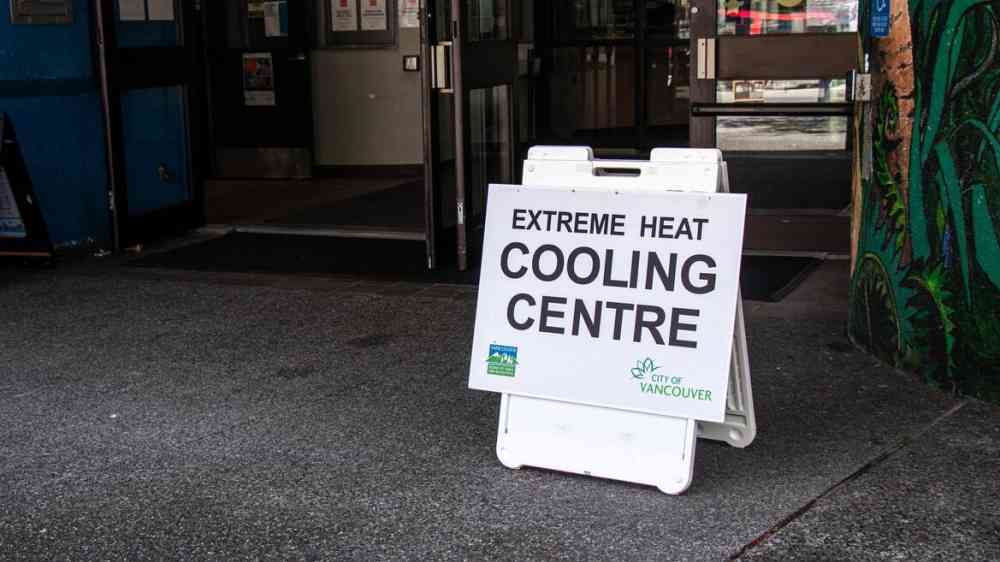Living in a +50°C world: Cooling must be considered critical infrastructure, says new report

Experts from the University of Birmingham are calling for global cooling and cold chain to be considered as critical infrastructure as the planet continues to heat.
The report, The Hot Reality: Living in a +50°C World, comes as world leaders, businesses, scientists, and environmental agencies gather in Dubai for the start of COP 28.
The Hot Reality: Living in a +50°C World project is led by the Centre for Sustainable Cooling and the Africa Centre of Excellence for Sustainable Cooling and Cold-Chain (ACES) in Kigali, Rwanda.
The provision of cooling is not an optional extra or a lifestyle luxury. It is a critical service for a well-functioning, well-adapted, resilient, and healthy society, and economy, enabling access to the basic essentials of life, such as food and health, and providing safe environments to live, work, learn and play.
Professor Toby Peters, University of Birmingham
The report outlines the need to formally designate cooling infrastructure systems as critical infrastructure, central to our climate adaptation strategy for a fast-warming world. It describes the benefits this would bring and proposes important next steps that must now be taken towards this vital goal.
Toby Peters, Professor of Cold Economy at the University of Birmingham and Heriot-Watt University, and one of the co-authors of the report said: “The provision of cooling is not an optional extra or a lifestyle luxury. It is a critical service for a well-functioning, well-adapted, resilient, and healthy society, and economy, enabling access to the basic essentials of life, such as food and health, and providing safe environments to live, work, learn and play. However, despite cooling being vital to every nation’s productivity, prosperity, and economic well-being, it is typically absent from lists of important national infrastructure.”
Professor Peters added: “In recent years we have seen record-breaking summer temperatures in the high 40°Cs and low 50°Cs being measured in places where this would have previously been unimaginable. As the world continues to warm our need to adapt to increasing seasonal ambient temperatures as well as more frequent, prolonged, and intense heatwaves, the energy resources, equipment, assets, people, business and finance models and other components that form the infrastructure systems delivering the critical service of cooling will be at the core of adaption and resilience strategies.”
The challenge is that cooling already accounts for already account for more than 7% of all GHG emissions. It is estimated that these emissions could double by 2030. Moreover, hydrofluorocarbons (HFCs) are the fastest-growing source of GHG emissions in the world because of the increasing global demand for space cooling and refrigeration.
Taking a high-level, holistic, whole systems thinking approach is a prerequisite for an optimised outcome to planning, building, operating, maintaining, adapting, and decommissioning such infrastructure sustainably.
Dr Leyla Sayin,University of Birmingham
Dr Leyla Sayin, Deputy Director, Centre for Sustainable Cooling: “Cooling’s central role to the economic functioning of society, as well as its impact on energy, demands that it should be a distinct cross-cutting sector within the suite of “economic infrastructure” considered by Governments, particularly in the context of future climate change and the impact of higher temperatures. Taking a high-level, holistic, whole systems thinking approach is a prerequisite for an optimised outcome to planning, building, operating, maintaining, adapting, and decommissioning such infrastructure sustainably.”
The report sets out five main recommendations to improve adaptability to our rapidly heating planet:
- National governments and international governance bodies worldwide should recognise that cooling is a critical service and designate the infrastructure which delivers it as critical infrastructure.
- National governments should develop integrated, future-proofed strategies for adaptation to climate change-induced heat impacts with the provision of sustainable cooling infrastructure at their core, including policies based on a comprehensive assessment of the food, health, digital industrial and economic security implications of sustainable cooling for their citizens.
- Governments, infrastructure designers, developers and operators, and academia should take a holistic, whole systems thinking approach to planning, building, operating, maintaining, adapting, and decommissioning cooling infrastructure.
- Governments, academia, infrastructure designers and civil society should recognise that the majority of the energy services required to support a modern society are thermal and adopt a thermal thinking approach to energy system policymaking, research, and design worldwide.
- Governments need to quantify the wider social impact of the cold chain to understand their stakeholder role and justify active investment in the development of the cooling and cold chain as a part of the country’s critical infrastructure.
Professor Peters concluded: “A lot of work needs to be done now, on the global cold chain and cooling infrastructure to meet the myriad of challenges that living in a +50°C world presents. We simply do not have the luxury of time to put this off. We need to realise that treating cooling as critical is a matter of survival.”